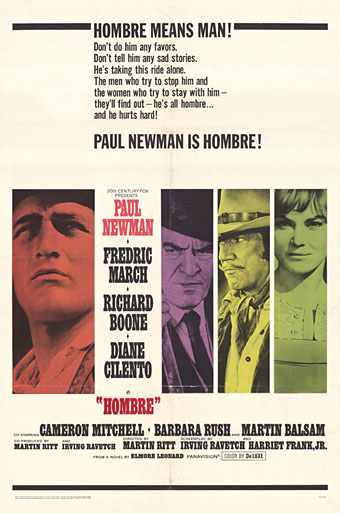Month: September 2008
Dark horses
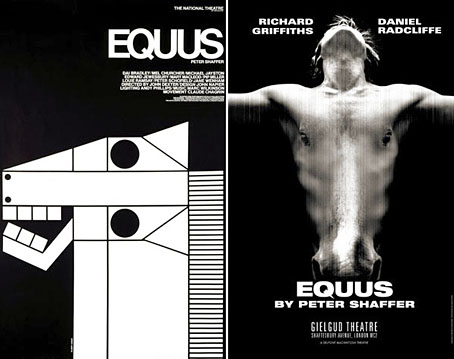
A juxtaposition of old and new theatre posters in the New York Times caught my eye this week, part of a feature about the current Broadway run of Peter Shaffer’s play. The news there, of course, has been Daniel Radcliffe’s on-stage nudity; understandable, perhaps, but celebrity trivia has overshadowed appraisal of Shaffer’s work as a piece of art.
What struck me seeing these was the two very different approaches to the same design problem. Given the subject matter, using an image of a horse is somewhat unavoidable as well as being immediately attractive since horses nearly always look good. The freight of historical and cultural association they carry is also one of the themes of the play. I really like the spare treatment of Gilbert Lesser’s 1976 poster for the National Theatre (left) and much prefer it to the new version used for the London and New York shows. The Lesser poster has the quality of a puzzle, matching the psychological piecing together of the story and Alan Strang’s accusation that Dysart the psychiatrist is always “playing games”. It also has a sinister quality lacking in the contemporary version; Shaffer’s Equus is an unforgiving god and the black eyes could refer to the blinded horses. The Photoshop horse looks altogether too mundane and is it my imagination or is the horse head misshapen slightly in order to fit the torso?
The art of Angelo Filomeno
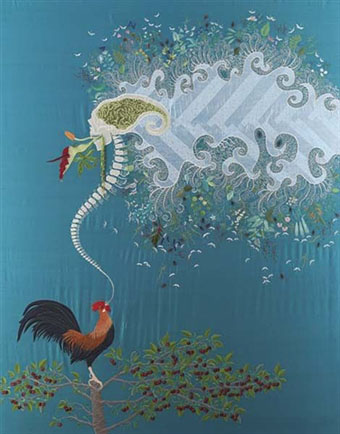
Venom (2003).
The work of Angelo Filomeno, an Italian artist based in New York, is just the kind of thing I like to see: insects, skulls and bones in a luscious presentation. The sculpture below is made of glass while the flat works are silk embroidery with crystals as part of the decoration. There’s a selection of the latter works here.
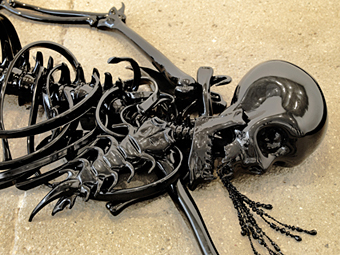
Cold (detail) (2007).
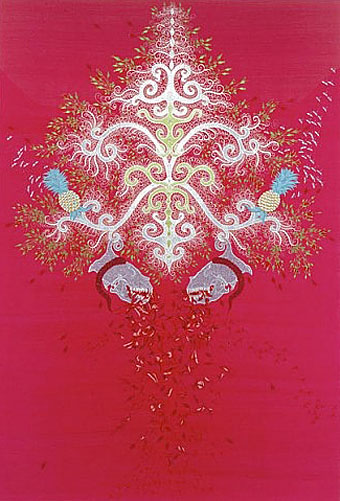
Incendiary Lovers (2005).
Previously on { feuilleton }
• The skull beneath the skin
• Vanitas paintings
• Giant Skeleton and the Chocolate Jesus
• Very Hungry God
• History of the skull as symbol
Paul Newman, 1925–2008
Paul Newman often said that his best films began with the letter H, among them The Hustler (1961) and Hud (1963). Two of the H films were directed by Martin Ritt, including my favourite, Hombre (1967), a tough and unsentimental western based on a novel by the tough and unsentimental Elmore Leonard. Hombre is one of the few decent American westerns of the Sixties, with a great script and a first class cast. Newman plays John Russell, a white man raised by Apaches who has to save a group of stagecoach passengers from Richard Boone’s murderous bandits. His performance is a study in emotionless determination, the polar opposite of his far more popular roles as Butch Cassidy and Cool Hand Luke. One of many memorable lines of dialogue comes when Diane Cilento’s character asks Russell why they should trust him to lead them to safety. “’Cause I can cut it, lady,” he says. Paul Newman could always cut it.
The Mindscape of Alan Moore: US edition
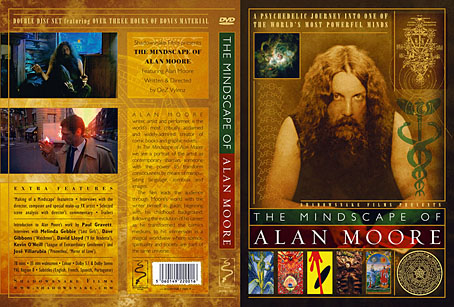
Yes, it’s that film again. The feature-length documentary by DeZ Vylenz about the Northampton Magus receives its official US release through Disinformation on September 30th. I designed the packaging (the original EU inlay is shown above) and the DVD menus.
As I’ve said before, this is a great film—shot on film, not video—a revealing insight into Alan’s life and work. The set includes a bonus disc of interviews with Alan’s artist collaborators: his wife, Melinda Gebbie (Lost Girls), Dave Gibbons (Watchmen), David Lloyd (V for Vendetta), Kevin O’Neill (The League of Extraordinary Gentlemen) and José Villarubia (Promethea, The Mirror of Love); also an interview with comics historian Paul Gravett.
Big Shiny Robot interviewed director DeZ this week and there’s a trailer at the Shadowsnake Films site. The Mindscape of Alan Moore should be available from all the usual DVD retail outlets.
Previously on { feuilleton }
• The Demon Regent Asmodeus
• New things for June
• Alan Moore in Arthur magazine
• Watchmen
• Alan Moore interview, 1988

